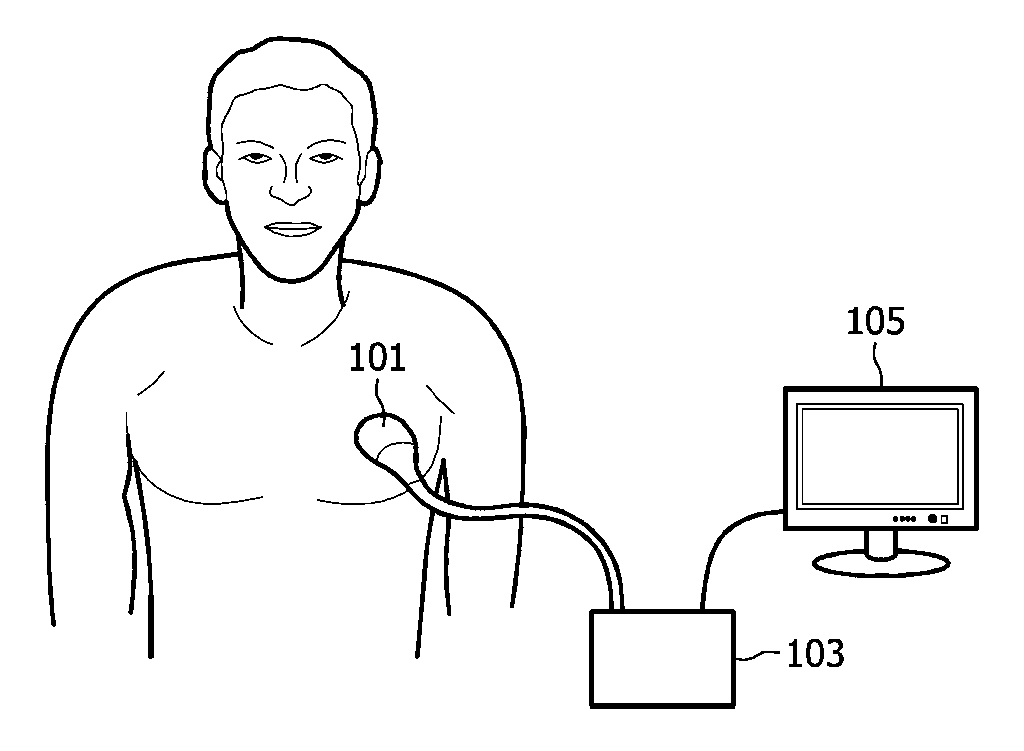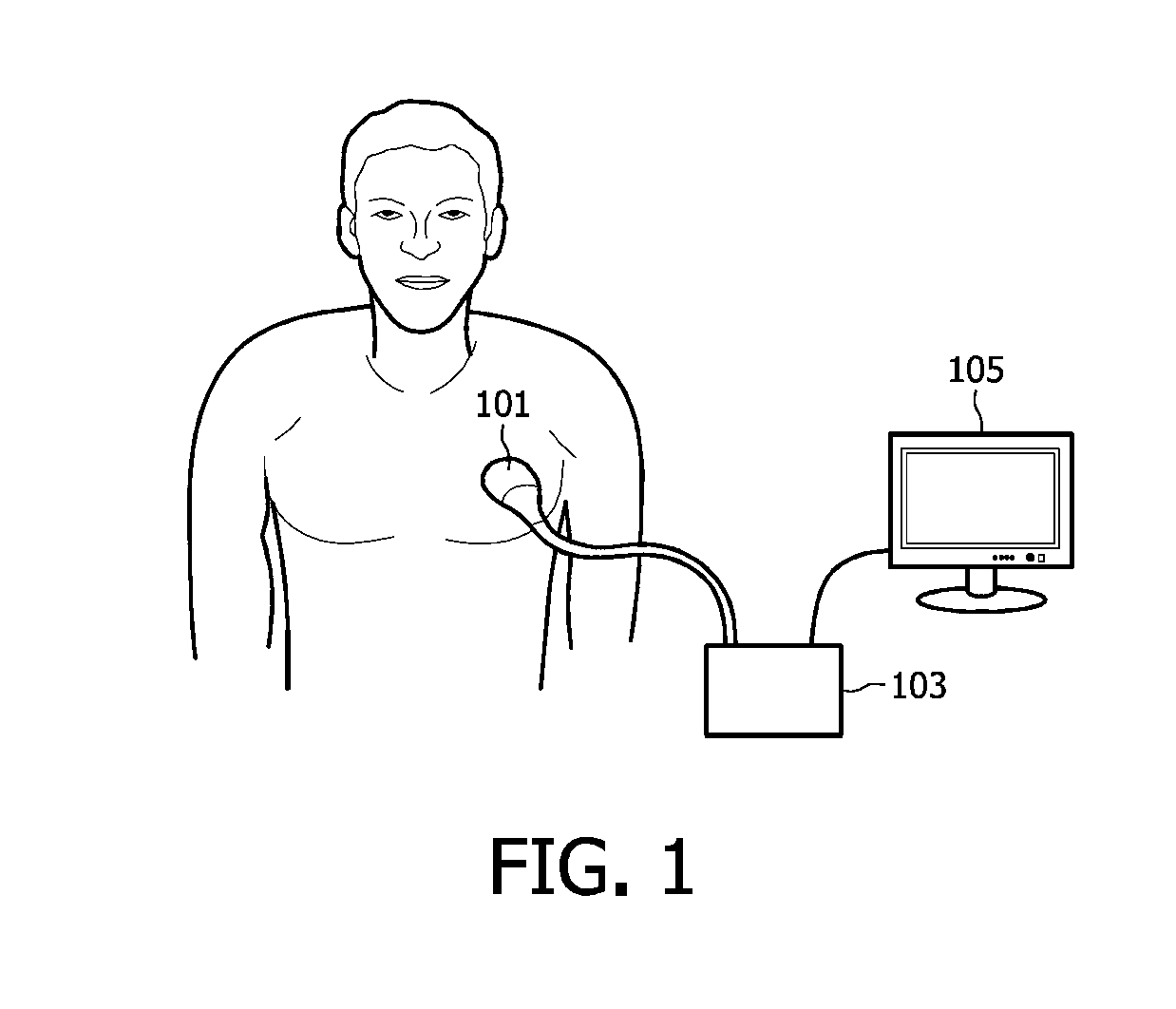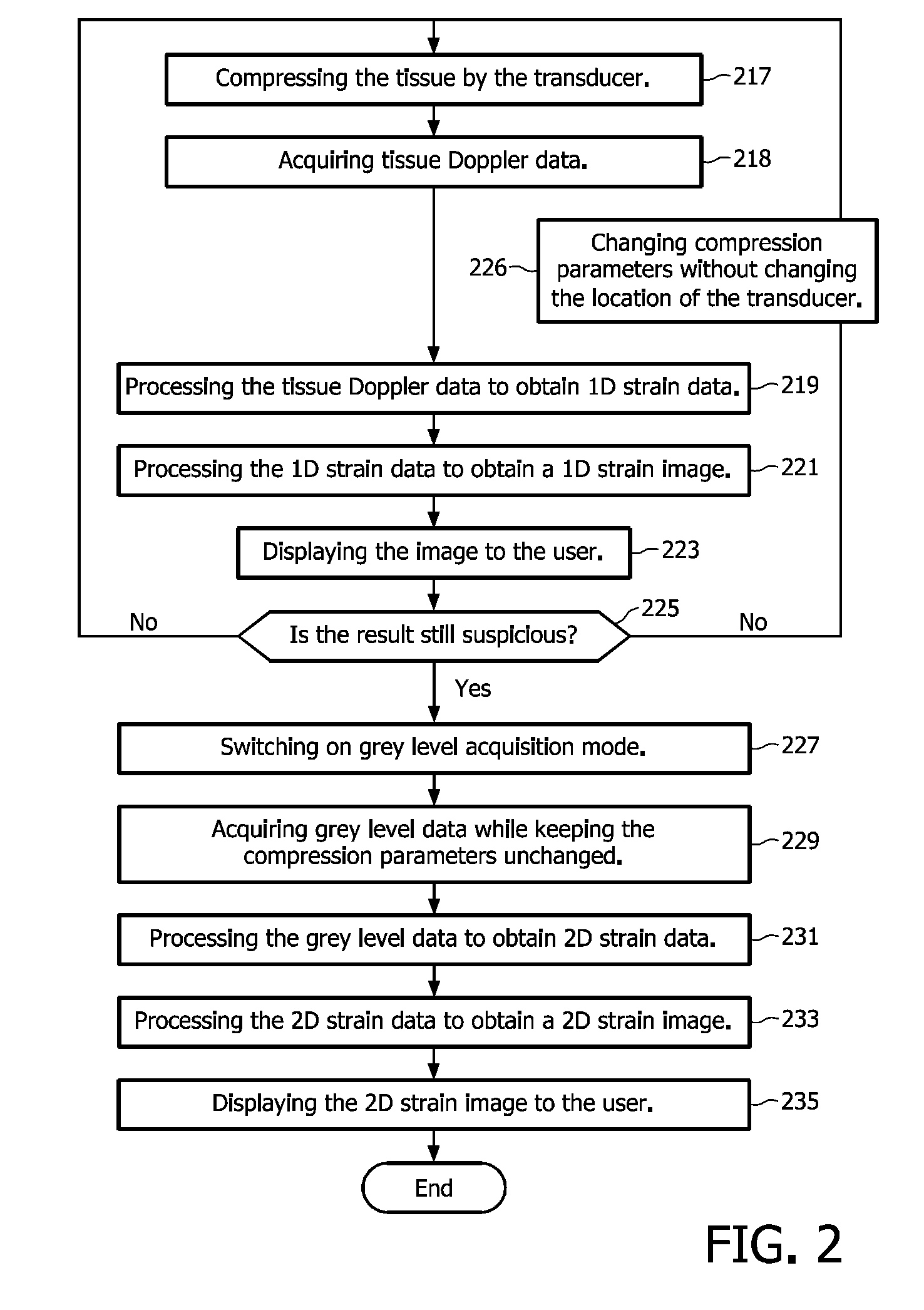Tissue strain analysis
a tissue strain and analysis technology, applied in the field of tissue strain analysis, can solve the problems of not being able to run in real-time, the final quality of the strain image is often less than satisfactory, and the speed and extent of the exertion of force are virtually impossible to control, so as to achieve the effect of quick delivery of high-quality tissue strain images
- Summary
- Abstract
- Description
- Claims
- Application Information
AI Technical Summary
Benefits of technology
Problems solved by technology
Method used
Image
Examples
Embodiment Construction
[0025]In the following description a non-limiting exemplary embodiment of the invention will be described in more detail. In this embodiment the invention is applied in breast elastography where the obtained elastogram can help to discriminate between benign and malignant tumours. It is to be noted that the invention is not limited to this application, but the invention can also be applied to echocardiography, where real-time inspection of TDI information would assess the value of acquisition and offline speckle tracking methods will further bring fine computations of relevant clinical parameters.
[0026]FIG. 1 shows an ultrasonic sensor probe, also known as a transducer 101 that is placed on the chest of a patient for obtaining ultrasonic signals from tissues of the patient. An ultrasonic transducer is a device that converts energy into ultrasonic or sound waves above the normal range of human hearing. The transducer 101 is connected to a processing unit 103 which is further connecte...
PUM
 Login to View More
Login to View More Abstract
Description
Claims
Application Information
 Login to View More
Login to View More - R&D
- Intellectual Property
- Life Sciences
- Materials
- Tech Scout
- Unparalleled Data Quality
- Higher Quality Content
- 60% Fewer Hallucinations
Browse by: Latest US Patents, China's latest patents, Technical Efficacy Thesaurus, Application Domain, Technology Topic, Popular Technical Reports.
© 2025 PatSnap. All rights reserved.Legal|Privacy policy|Modern Slavery Act Transparency Statement|Sitemap|About US| Contact US: help@patsnap.com



